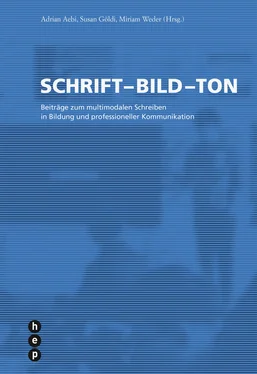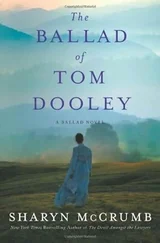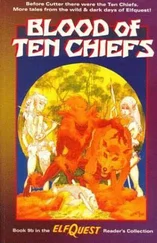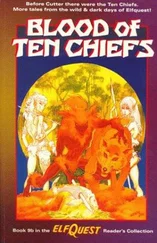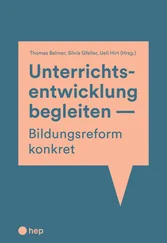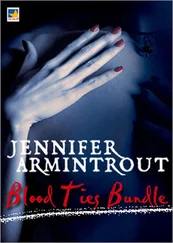I am currently engaged in a three-year British Academy funded project called Changing Writing . There are three themes in the project. The first theme, which this chapter feeds into, includes looking at how academic voice and argument are constructed through different modes. A mode is the culturally shaped material available for representation such as visual mode, oral mode or written mode. Secondly, the project is looking at ways of teaching and assessing writing in diverse contexts. And lastly, it is examining how writing is re-configured in different media, focusing on the materiality of the media, the mobility of the media, the imagined audiences, the spaces and places of writing. A paper-based manga comic, as compared to the same comic on screen, is a good example of the effects of the materiality of the media. The book as object does play a role in narrative and in comics, page turning typically functions as a transition device. Materiality, in this way, is incorporated into the narrative. Compare that to the online version. Many comics found online are actually produced for the page, which means that viewing them on the screen can place particular constraints on them. For example, the page on screen cannot be viewed as a full image but can be seen only when scrolled down. This affects the flow in the reading. Online comics, however, have other affordances. They allow access to other volumes of work, connection to a community and provide spaces for comment (see Huang & Archer 2014). In this example, it is clear how writing and image as modes translate differently onto the media of page and screen.
Drawing on multimodal social semiotics as a framework, this chapter aims to explore a number of theoretical tools which can «account for the whole domain of representation; which do so aptly for the specificities of each mode» (Kress 2010, 105). It aims to explore semiotic signifiers of academic voice within a range of modes and genres, and to develop a critical metalanguage or framework for academic voice, in order to assist students both in the production and critique of multimodal texts.
Voice as enabling critical access to dominant practices
At the crux of Writing Centre work is what we call the access paradox – how to provide students with access to dominant forms and practices related to academic writing and genres, whilst at the same time enabling critique of those practices (Archer 2010). By dominant practices, I mean dominant languages, language varieties, discourses, modes of representation, genres, and types of knowledge. The focus on critical access by the Writing Centre is especially important in the light of ongoing student protest action across Higher Education in South Africa over the last three years which began with the Rhodes must fall campaign, and the ongoing calls for decolonization of the curriculum. Ngugi wa Thiong’o describes how colonialism on the African continent not only included the taking of land and resources, but importantly included the «mental universe of the colonized, the control, through culture, of how people perceived themselves and their relationship to the world» (1986, 16).
Voice is a key concept in Higher Education which can enable student awareness of their own agency within the constraints of academic practices. It is not a new concept, but the investigation here is new in that it focuses on voice across modes, media and genres. Voice is an elusive concept with multiple definitions. It can be used as a proxy for an essentializing humanist view, as in finding your own voice (Elbow 2007). Or, in progressivist pedagogy, voice can be seen as taking a certain standpoint and also as a critical term for formulating an alternative pedagogy (Cope & Kalantzis 1993). Usefully, Clark and Ivanič (1997) speak about writers creating a discoursal self through the act of writing and the discourses they enter into as they write.
Why then use a mode-specific term like voice which is so closely linked to the mode of speech (and writing)? The concept of voice comes with a particular history, and with particular theoretical resonances which allow us to look at text in a way that draws on theories of writing and an academic literacies perspective. An academic literacies approach to writing takes into account issues of identity, institutional relationships of discourse and power, and the contested nature of writing practices (Lea & Street 1998, 159). The field of academic literacies has a long history of theorizing agency that a term like stance or style may not have. Stance refers to authorial point of view (Hyland 1999) whereas voice is more concerned with the relation between the writer and reader. I use the term voice to refer to the way a sign-maker establishes presence in a text through the choice and use of semiotic resources (signifiers of authorial engagement), as well as positioning in relation to other sources, and positioning in relation to the audience and site of display .
Instead of thinking about voice as aligned to coherence, which is perhaps a more liberal humanist notion of voice, I think about voice as negotiating and containing contesting voices. This is Bakhtin’s (1981) notion of dialogism which emphasizes voice as a site of struggle. However, these choices are not infinite, and voice is subject to contextual conditions which are located within larger patterns of inequality and power relations (Blommaert 2005). This notion of voice operating within constraints provides a useful way of thinking about voice and agency. There are contextual constraints which include institutional culture, as well as discursive practices, such as disciplinary genres. Besides semiotic alternatives for meaning-making, there are also semiotic constraints within different modes and media, as we saw with the manga comic on screen versus on paper.
To stay with this idea of constraints for a while, Simon Bell (2016) reports on student writing projects in the context of the Higher Education subject of design . The projects were characterized by artificially imposed constraints such as: writing within image and shape restrictions; writing within font restrictions; and writing within word restrictions. Bell argues that paradoxically more weight is given to each word by using so few. This sharpens the focus on the words, «making them work harder to produce meaning» (Bell 2016, 141). This is a lot like a PechaKucha style presentation. In this type of presentation, there are only 20 slides in the powerpoint. Each slide is to last 20 seconds and they are to be comprised of images and no writing. Here the constrictions of form can also enable a new kind of thinking and a tightening of argument, for example, finding an image to illustrate a concept could tighten or broaden your notion of that concept. Constricting time can also provide a certain energy to a presentation in the way that slides containing a list of bullet points cannot. However, as with any form, there are certain gains and losses. Definitions of concepts are difficult to do in images and are often less precise than when realized through writing. For instance, I could try to capture my definition of voice in four images – as being about presence in text, choice of semiotic resources, positioning in relation to other sources (citation) , and in relation to audience (see Abbildung 1).

Abbildung 1: Definition of voice portrayed visually
Choice is represented by a fork in the road, citation as a head amongst smaller heads located in a speech bubble, and audience is held in the palm of your hand . It is clear that the images function more metaphorically here and less clearly and explicitly than a written definition would. How well this definition works is thus debatable. In addition, these images are all taken from open access websites. These kinds of generic images are problematic in some ways, as the sign-maker has to force a connection between the image and the concept. My point here is that constraints can enable creativity and different ways of thinking, but also that certain modes and genres are better suited for different functions (and definitions tend to work better in language than in image).
Читать дальше
